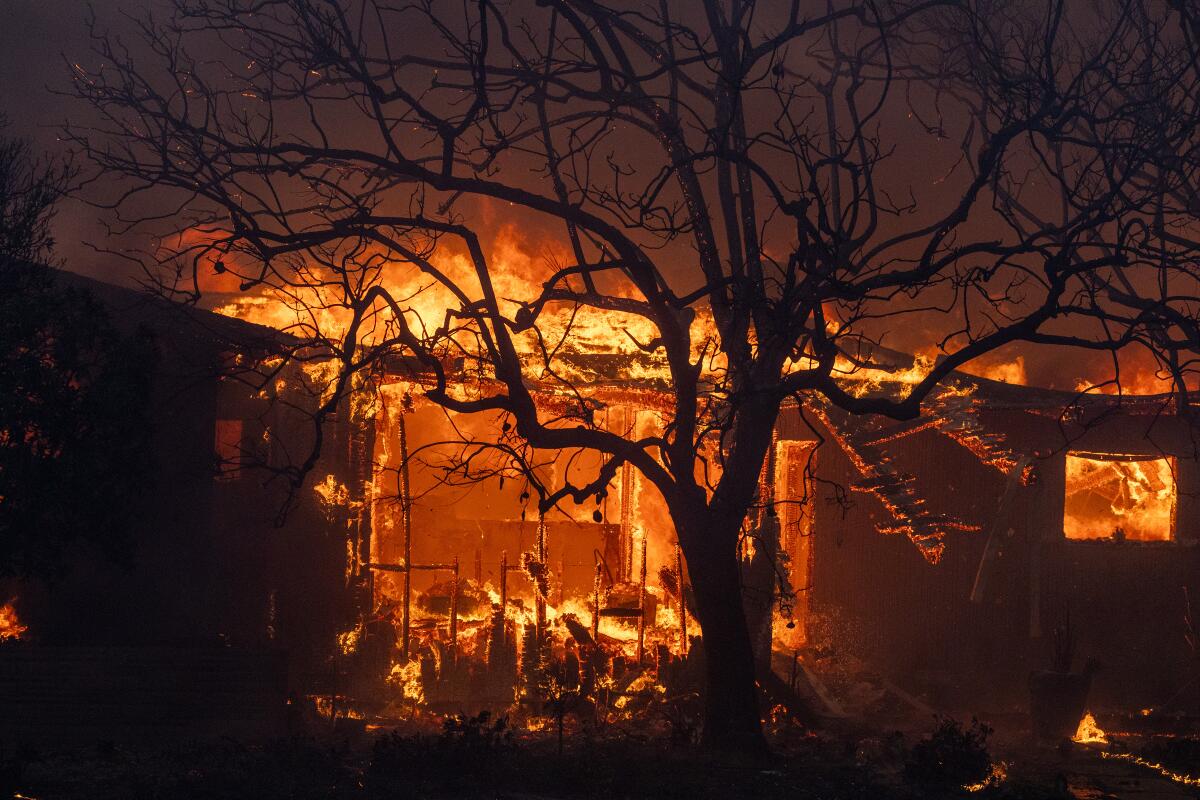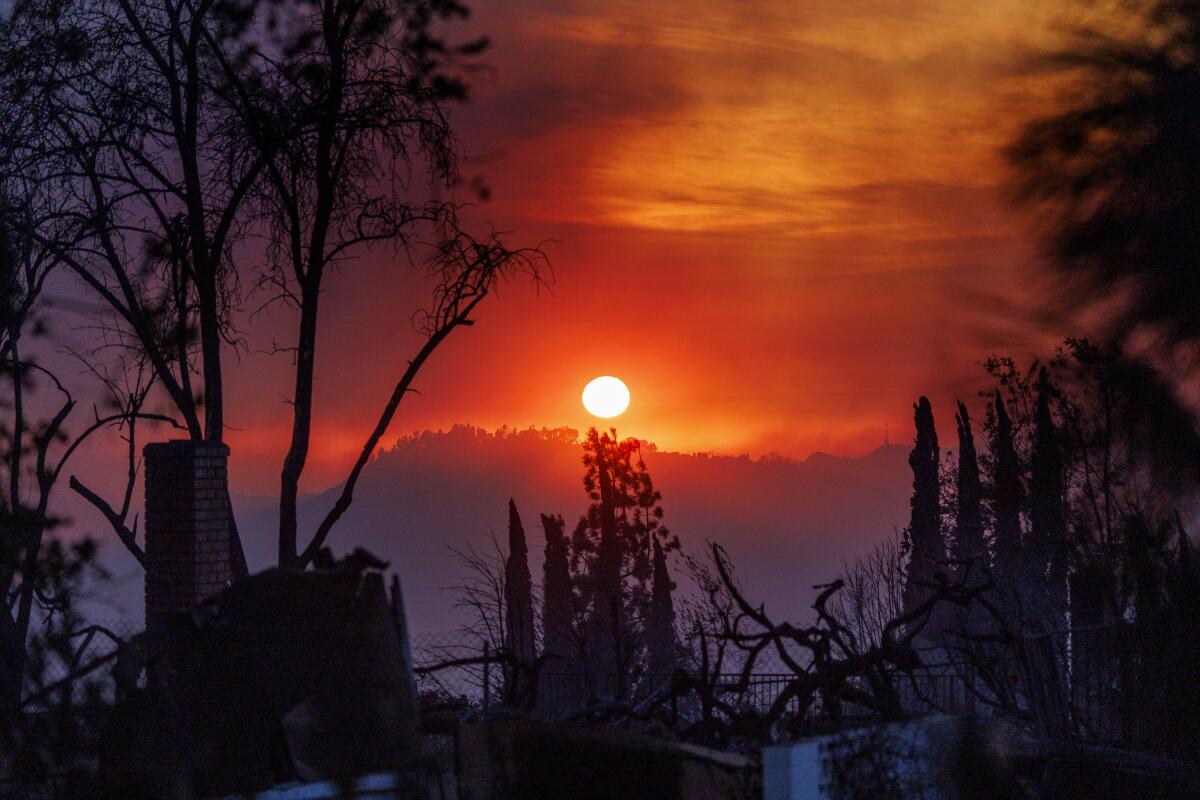• Eight water districts have issued water advisories in Los Angeles County due to the Palisades and Eaton fires. There is concern that the water may be contaminated by toxins from the fires.
• If water systems lose pressure during urban wildfires, bacteria and contaminants such as volatile organic compounds (VOCs) are allowed to enter the water.
• People's homes and offices contain materials that turn into toxic vapors once burned, releasing VOCs, including benzene, into the air that infiltrate compromised water systems. This is why it is dangerous to boil water that contains VOCs.
At least eight water districts in Los Angeles County (six in the Altadena area and two in the Malibu/Palisades area) have issued do not use or drink water advisories since the Eaton and Palisades fires began burning at early this month. , meaning customers should not use that water until they get the go-ahead.
If you're wondering how fires can make drinking water dangerous, the first thing you need to understand is this: the structures where we work, shop, dine, sleep, and generally live our lives are full of materials that release toxic waste. when those materials burn. .
This article is provided free of charge to help keep our community safe and supported during these devastating fires.
The examples are numerous. Sofas and mattresses, televisions and refrigerators, tires and toys, even clothing are full of polyurethane and plastics, which vaporize into toxic smoke once they are set on fire, said Dr. Gina Solomon, chief of the Public Affairs Division. Occupational, Environmental and Climate Medicine at UC San Francisco.
On Jan. 8, almost all that was left of the homes on Rubio Canyon and East Alta Loma Drive was smoke and ash after the Eaton Fire swept through Altadena.
(GL Twisted II)
These toxins, many of which are known as VOCs or volatile organic compounds, include chemicals like benzene, which is used to make almost everything in the modern world, from plastics and gasoline to detergents and pesticides. However, in liquid or vapor form, benzene is carcinogenic if swallowed or inhaled. Prolonged exposure damages the bone marrow, which is why it is linked to leukemia.
Most studies on benzene are based on many years of exposure, Solomon said. “No one knows exactly what will happen in a few months, but no one wants to know,” he said. “We don't want to use the population of the burned areas to see the effects of months or weeks of exposure. “We just want to avoid exposure in those areas.”
How can these toxins get into water systems?
If a water system loses water pressure, that allows contaminants like bacteria, vaporized VOCs and other toxic chemicals to enter, Solomon said.
“Normally our water systems are positive pressure; they're full of water, so nothing can get into the pipes,” he said. But if the pipes lose pressure, as in the case of water hydrants that dry up, “you can create situations where you get suction instead of pressure and, in this case, it is not a backflow of water.” . [contaminated] water but air filled with toxic chemicals, including VOCs.”
Solomon studied this phenomenon after the Camp Fire destroyed about 18,000 structures in the Northern California town of Paradise in November 2018. In a second study, “Organic Chemical Contaminants in Water System Infrastructure After a wildfire,” she and other researchers identified 95 contaminants in water systems. which came not only from melted pipes but also from “smoke intrusion” after the Camp Fire in Paradise and the 2017 Tubbs Fire in Santa Rosa.

A home on El Medio Avenue in Pacific Palisades burns the night of January 7 during the Palisades Fire.
(Brian van der Brug/Los Angeles Times)
Only one neighborhood in Santa Rosa, Fountain Grove, lost water pressure during the Tubbs Fire, Solomon said. Hydrants dried up and the water in the neighborhood's 13 surviving homes developed a contamination problem. Residents reported the water smelled like gasoline, he said, and tests revealed benzene contamination for reasons investigators could not explain.
“That was our first clue,” Solomon said. However, researchers didn't really understand what was happening until they were able to conduct more extensive testing of the drinking water from the 1,200 surviving homes in Paradise. That's when they learned that VOCs and other contaminants could enter drinking water even in the form of smoke or gas if water systems lost pressure.
As a result of their findings, the state Assembly passed a new law, Section 116596 of the California Health and Safety Code, which went into effect on January 1, 2024, requiring that if a structure or structures burn in a fire forestry of 300 acres or more, Water districts must test their water and deem it free of contaminants before it can be used by customers.
“Basically, we are guilty until proven innocent, under this law,” said Tom Majich, general manager of the Kinneloa Irrigation District, the smallest of five water districts in the Altadena area with water advisories. “And I'm not saying that's wrong. Some of us may be guilty, but I just want people to understand that posting a [water advisory] warning does not mean you have a problem. “We are simply following the law.”
Majich is awaiting test results from his district and is hopeful his system will be deemed safe. The district's water system did not lose pressure, he said, and less than 7% of the district's 600 customers (about 40 structures) were burned in the fire. “My personal opinion is that our water system was not compromised, but the law says that doesn't matter,” Majich said. “If you lose a house, you do the testing, so we're waiting for the results.”
The other Altadena-area districts with water advisories are Las Flores Water Co., Lincoln Avenue Water Co., Pasadena Water and Power (in the northeast part of the district) and Rubio Cañon Land & Water Assn. The Los Angeles Department of Water and Power has also issued water advisories for the Palisades area and for Los Angeles County Waterworks District 29 in Malibu. The city of Sierra Madre, which is southeast of Altadena, also issued an unsafe water alert for areas north of Grandview Avenue.
Majich said he doesn't know when his district's test results will be available. He speculated that other water districts have not had the opportunity to conduct testing yet because their offices and systems were severely damaged by the fire. “They're still really in crisis mode,” he said. Calls to the other districts for comment were not returned.
Why can't you boil suspicious water?
Boiling can kill bacteria, another concern in contaminated water systems. What's dangerous is when the water is full of volatile organic compounds, Solomon said, because “when you boil water, it releases benzene and other chemicals into the kitchen.”
Hot showers or baths can also vaporize these chemicals, and if bacteria is in the water, they could splash into your eyes, nose, or mouth. That's why most water advisories have do-not-use alerts until systems can be thoroughly tested, repaired, and cleaned.

A gutted washer and dryer lie among the ash remains of a home destroyed by the Eaton Fire on Wapello Street in Altadena.
(Ringo Chiu / For The Times)
Sometimes closures are just precautionary, Solomon said, and can be resolved quickly once officials determine the water is safe. But in Paradise, several systems had to be flushed repeatedly because most water pipes are coated on the inside with biofilms, microorganisms that stick to surfaces “that absorb and retain all the toxic chemicals,” he said.
“Once the biofilm is contaminated, it is difficult to get those chemicals out of the pipes. In Paradise, they had to flush the entire water system seven times and some of those service lines [between water mains and houses] They were so contaminated that they had to go in, dig them up and just replace them,” Solomon said. “Basically, what we saw in Paradise was a six-month process, and I think we can anticipate a similar time frame in the hardest-hit parts of Los Angeles.”
Once a water system gets the go-ahead, people should feel confident in the quality of their drinking water, Solomon said. “I know a lot of people will be scared and may not trust the results, but I have great faith in the actual testing data,” he said. “Once they have done the tests and the area is negative [for contaminants]“It means people can breathe a sigh of relief knowing they are not in an area affected by water hazards.”

A haze of smoke fills the landscape at dusk as a house burns in the foreground during the Eaton Fire in Altadena on January 8.
(Gina Ferazzi / Los Angeles Times)
Can you do anything safely with suspicious water?
Basically, Solomon said, water with suspected contaminants should be avoided.
That means:
- Do not bathe or shower in water (even cold showers can be dangerous if water gets into your eyes, nose, or mouth).
- Do not cook or make ice.
- Without brushing your teeth.
- Do not wash dishes (as hot or warm water could release toxins).
- Pets should not drink the water either.
Solomon said she's not sure how watering plants outside would be affected. VOCs would evaporate in sunlight, he said, but there hasn't been much research done on what other potential pollutants might do.
The safest thing to do, he said, is to simply not use the water until it is deemed safe.
Vegetables, fruits and plants grown outdoors should also not be negatively affected by water, he said. The biggest concern outdoors is removing ash from burned structures, which are also full of toxins, Solomon said, so be sure to wear gloves and an N95 mask to avoid inhaling the ash.












